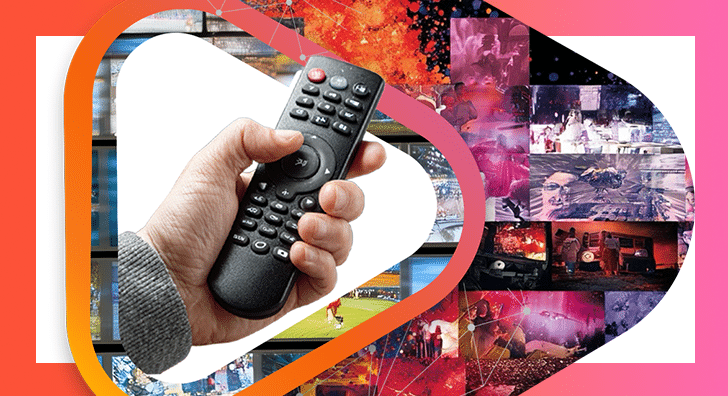By Ed Dinichert, Chief Revenue Officer at TripleLift
Welcome to the first in a new series “The Adtech Optimist’s Guide to…” where we explore the promising future of advertising technology through a lens of possibility rather than apprehension.
In the advertising technology industry, innovations are too often framed through fear. Fear of disruption, fear of obsolescence, fear that competitors will adapt while we fall behind. This series aims to change that narrative. At TripleLift, we believe ad tech should not be something to fear, but rather a force that can engage, empower, and excite both advertisers and consumers. “The Adtech Optimist’s Guide” will provide readers with insights to help them embrace technological evolution rather than resist it.
As we mark television’s 100th anniversary this year, I find myself reflecting on the medium’s remarkable journey from its first demonstrations at a London department store to today’s diverse streaming landscape. This centennial offers us a perfect opportunity to consider: what will “TV” be like in 100 years?
Growing up in France, American television shows like Friends influenced my understanding of another culture before I ever visited the United States. Those narratives shaped my perception of American life in ways no textbook ever could. That power of connection across borders demonstrated television’s unique cultural influence. Today, as television transforms into something entirely new, its potential to connect people and ideas is only expanding and evolving.
As we look to the next century, let’s explore four transformative shifts that will define television as we know it.
The Dissolution of Screens and Proliferation of Channels
For decades, we have defined television by its physical form—the screen in our living rooms. That limitation is quickly dissolving, and in the coming years, the very concept of “watching TV” will transcend physical displays entirely.
We are moving toward experiences where content flows seamlessly across devices and environments. The boundaries between gaming, social interaction, and video content are blurring into unified entertainment experiences. Virtual and augmented reality technologies will eventually create immersive storytelling environments that make today’s viewing experiences seem as outdated as black-and-white broadcasts do to us now.
For content creators and advertisers, this evolution demands flexibility. The most successful will create content ecosystems rather than standalone programs, designing experiences that adapt to how, where, and when people want to engage. The winners will be those who see beyond the traditional screen and channels to the boundless canvas of interconnected experiences.
From Mass Media to Micro Moments: The New Frontier of Attention and Advertising
The first century of television was defined by mass cultural moments—millions of people watching the same content at the same time. But today’s attention economy looks nothing like that. Content is getting shorter, more personal, and more participatory. Platforms like TikTok and YouTube dominate engagement by delivering endless streams of user-generated, bite-sized videos that are constantly refreshed by algorithmic recommendations.
This shift is reshaping not just what we watch, but how we watch. Time spent on long-form content is being challenged by the cumulative pull of short-form feeds. As Scott Galloway aptly pointed out in his three-year-old (but still so spot on) post: “TikTok Boom,” production budgets are having a tough time when pitted against the infinite scroll. That dynamic hasn’t changed—if anything, it’s accelerated in the last three years.
For advertisers, this fragmentation creates both a challenge and an opportunity: how do you stay relevant when shared attention is rare and fleeting?
The answer lies in context.
In a landscape defined by micro-moments, ad relevance comes from when, where, and why a message appears, not just who it’s for. We’re seeing a rise in live events (Netflix is leading the charge), real-time data-driven personalization, and curated environments that give brands better signal and better alignment.
As audiences fragment, the new cultural currency isn’t mass reach—it’s meaningful connection. And in a world where every second of attention counts, the brands that win will be the ones that show up in the right context, at the right time, with the right message.
The Commerce Evolution
Perhaps the most transformative shift will be television’s evolution from a passive medium to an active commerce channel. The integration of shopping, services, and entertainment into seamless experiences represents a fundamental change in television’s function.
We have seen early experiments with shoppable content, but current implementations only hint at what is coming. Imagine watching a cooking program and ordering ingredients for delivery with a voice command or trying on a character’s outfit via augmented reality before purchasing. These capabilities will transform television from a marketing channel into a direct conversion platform.
For businesses, preparing for this convergence means reimagining the customer journey. Television will no longer sit at the top of the marketing funnel, driving awareness that converts elsewhere. Instead, it will serve as a complete funnel in itself, from discovery to purchase and beyond.
Retailers and content providers who collaborate early will establish the standards and expectations that define this new landscape. The strategic question is not whether television will become commerce-enabled, but how quickly your business can position itself to benefit from this change. What Amazon has done with its AdTech stack for full funnel, bridging search Ads, Prime Video Ads with Retail Sales and consideration signals, is only the beginning.
A Future of Connection, Not Just Content
What I find most promising about television’s next century is not the technology itself, but how it will deepen human connection. Even with a technological evolution ahead, television’s core purpose remains the same: bringing people together through shared stories and experiences.
The fragmentation of media has sometimes been portrayed as the end of common culture, but I see it differently. The future of television will offer more opportunities for connection, not fewer, creating bridges across geography, language, and culture in ways previously unimaginable. Netflix has shown us how a Spanish heist, a French thief, or a twisted Korean game can resonate with all of us, regardless of our origin or culture. These are the new James Bonds and Indiana Joneses.
For businesses and marketers, embracing this future requires optimism and creativity. The companies that thrive will not be those that cling to outdated models or resist change, but those who see technological evolution as an opportunity to build deeper, more meaningful connections with their audiences.
As we enter television’s second century, let us approach the journey with curiosity and enthusiasm rather than apprehension. The innovations ahead are not disruptions to be managed but opportunities to be embraced.
In future installments of “The Adtech Optimist’s Guide,” we will explore other technological evolutions reshaping media and advertising, always with an eye toward possibility rather than concern. By understanding these changes through a lens of opportunity, we can all participate in building a future where technology enhances rather than diminishes the human experience.
After all, optimism in advertising technology is not about positive thinking. It’s about having the vision to see opportunities where others see only challenges. Be resilient, stay curious and dare greatly, humans of adtech!
Ed Dinichert is Chief Revenue Officer at TripleLift, where he leads global revenue operations. Before joining TripleLift, Ed spent a decade at Amazon, helping build Amazon Ads from its early days into a significant advertising platform.







